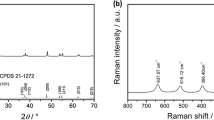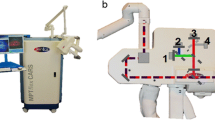Abstract
The tape stripping technique is an experimental method frequently used for reconstruction of the in-depth distribution of various topically administered substances within the horny layer of human skin, e.g., compounds contained in sunscreens. Titanium dioxide (TiO2) nanoparticles (25–200 nm in diameter) are one such compound. Optical techniques which apply blue light are found to be suitable for reconstruction. However, the presence of particles affects the light propagation within the skin and therefore causes incorrect determination of strip thickness, leading to an improper reconstructed distribution of nanoparticle concentration revealed from the experimental data. This study evaluates the errors emerging from the use of blue (400 nm) and NIR (800 nm) radiation and finds the use of longer wavelength light more advantageous. Particles of different diameters are considered, and it is revealed that the application of small particles (25–60 nm) results in the lowest rate of error.
Similar content being viewed by others
References
H.-J. Weigmann, J. Lademann, H. Meffert, et al., Skin Pharmacol. Appl. Skin Physiol. 12, 34 (1999).
H. Schaefer and T. Redelmeier, Skin Barrier: Principles of Percutaneous Absorption (Karger, Basel, 1996).
J. Lademann, H. Richter, N. Otberg, et al., Laser Phys. 13, 756(2003).
P. J. Caspers, G. W. Lucassen, and G. J. Pupplels, Biophys. J. 85, 572 (2003).
U. Jacobi, N. Meykadeh, W. Sterry, and J. Lademann, J. Dt. Dermatol. Gesell. 1, 884 (2003).
U. Jacobi, H. J. Weigmann, J. Ulrich, et al., Skin Res. Technol., 11, 91 (2005).
H.-J. Weigmann, U. Lindemann, C. Antoniou, et al., Skin Pharmacol. Appl. Skin Physiol. 16, 217 (2003).
U. Lindemann, K. Wilken, H.-J. Weigmann, et al., J. Biomed. Opt. 8, 601 (2003).
U. Lindemann, H. J. Weigmann, H. Schaefer, et al., Skin Pharmacol. Appl. Skin Physiol. 16, 228 (2003).
J. Lademann, U. Jacobi, H. Richter, et al., Laser Phys. 14, 234 (2004).
H.-J. Weigmann, U. Jacobi, C. Antoniou, et al., J. Biomed. Opt. 10, 014009 (2005).
J. Lademann, H.-J. Weigmann, C. Rickmeyer, et al., Skin Pharmacol. Appl. Skin Physiol. 12, 247 (1999).
J. Lademann, A. Knüttel, H. Richter, et al., Laser Phys. 15, 288 (2005).
J. Lademann, S. Schanzer, U. Jacobi, et al., J. Biomed. Opt. 10, 014008 (2005).
A. P. Popov, A. V. Priezzhev, J. Lademann, and R. Myllylä, J. Phys. D: Appl. Phys. 38, 2564 (2005).
H. C. Van de Hulst, Light Scattering by Small Particles (Wiley, New York, 1957; Inostrannay Literatura, Moscow, 1961).
L. E. McNeil and R. H. French, Acta Mater. 48, 4571(2000).
M. W. Ribarsky, “Titanium dioxide (TiO2) (rutile),” in Handbook of Optical Constants of Solids, Ed. by Palik (Academic, Orlando, 1985), pp. 795–804.
V. V. Tuchin, Tissue Optics (SPIE Press, Bellingham, 2000).
L. G. Henyey and J. L. Greenstein, Astrophys. J. 93, 70 (1941).
M. J. C. Van Gemert, S. L. Jacques, H. J. C. M. Sterenborg, and V. M. Star, IEEE Trans. Biomed. Eng. 36, 1146(1989).
A. P. Popov and A. V. Priezzhev, Proc. SPIE 5068, 299 (2003).
U. Jacobi, M. Kaiser, H. Richter, et al., Skin Pharmacol. Physiol. 18, 175 (2005).
Author information
Authors and Affiliations
Additional information
Original Text © Astro, Ltd., 2006.
Rights and permissions
About this article
Cite this article
Popov, A.P., Priezzhev, A.V., Lademann, J. et al. Advantages of NIR radiation use for optical determination of skin horny layer thickness with embedded TiO2 nanoparticles during tape stripping procedure. Laser Phys. 16, 751–757 (2006). https://doi.org/10.1134/S1054660X06050045
Received:
Issue Date:
DOI: https://doi.org/10.1134/S1054660X06050045




